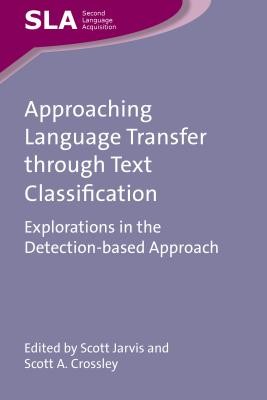
- We will send in 10–14 business days.
- Publisher: Multilingual Matters Limited
- ISBN-10: 184769697X
- ISBN-13: 9781847696977
- Format: 15.6 x 23.4 x 1.1 cm, softcover
- Language: English
- SAVE -10% with code: EXTRA
Approaching Language Transfer Through Text Classification (e-book) (used book) | bookbook.eu
Reviews
Description
Recent work has pointed to the need for a detection-based approach to transfer capable of discovering elusive crosslinguistic effects through the use of human judges and computer classifiers that can learn to predict learners' language backgrounds based on their patterns of language use. This book addresses that need. It details the nature of the detection-based approach, discusses how this approach fits into the overall scope of transfer research, and discusses the few previous studies that have laid the groundwork for this approach. The core of the book consists of five empirical studies that use computer classifiers to detect the native-language affiliations of texts written by foreign language learners of English. The results highlight combinations of language features that are the most reliable predictors of learners' language backgrounds.
EXTRA 10 % discount with code: EXTRA
The promotion ends in 18d.17:57:14
The discount code is valid when purchasing from 10 €. Discounts do not stack.
- Publisher: Multilingual Matters Limited
- ISBN-10: 184769697X
- ISBN-13: 9781847696977
- Format: 15.6 x 23.4 x 1.1 cm, softcover
- Language: English English
Recent work has pointed to the need for a detection-based approach to transfer capable of discovering elusive crosslinguistic effects through the use of human judges and computer classifiers that can learn to predict learners' language backgrounds based on their patterns of language use. This book addresses that need. It details the nature of the detection-based approach, discusses how this approach fits into the overall scope of transfer research, and discusses the few previous studies that have laid the groundwork for this approach. The core of the book consists of five empirical studies that use computer classifiers to detect the native-language affiliations of texts written by foreign language learners of English. The results highlight combinations of language features that are the most reliable predictors of learners' language backgrounds.


Reviews